Family name: Tofieldiaceae Takht.
Synonym(s): Nartheciaceae Fr. ex Bjurzon subfam. Tofieldioideae; Nartheciaceae Fr. ex Bjurzon tr. Tofieldieae
Common name(s): false asphodel family
*Number of genera/species: 4/28
List of genera records in GRIN-Global
seed
Fruit dehiscentdehiscent:
(v. dehisce) splitting open at maturity to release contents (of a fruit)
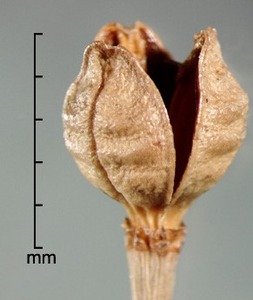 , septicidalsepticidal:
, septicidalsepticidal:
type of capsular dehiscence, opening longitudinally by separating between the septa of adjacent carpels
 capsulecapsule:
capsulecapsule:
a dry, dehiscent fruit formed by two or more carpels
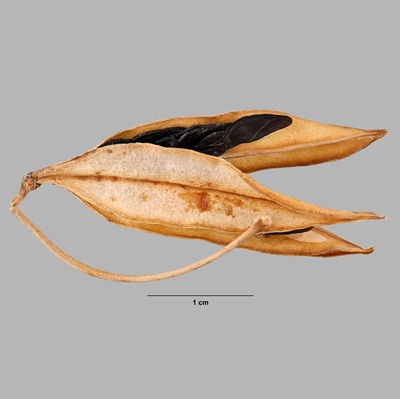 , simplesimple:
, simplesimple:
fruit formed from a single flower with one pistil, solitary carpel or several fused carpels
or aggregateaggregate:
fruit formed from a single flower with carpels several and distinct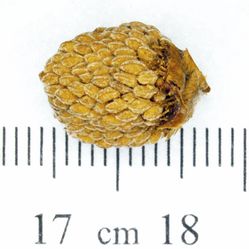 (attached at the base), 2–10 mm long, globoseglobose:
(attached at the base), 2–10 mm long, globoseglobose:
3D shape—more or less spherical
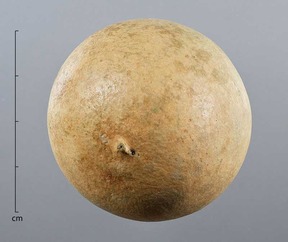 to triangulartriangular:
to triangulartriangular:
2D shape—three relatively straight sides with distinct corners; more angular than teardrop-shaped , angledangled:
, angledangled:
2D shape—having sides that meet at acute or obtuse angles
in transectiontransection:
a cross section; representing a plane made by cutting across an organ at a right angle to its length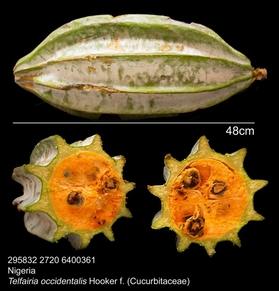 , with persistent sepalssepals:
, with persistent sepalssepals:
a member of the outer envelope of a flower (calyx)
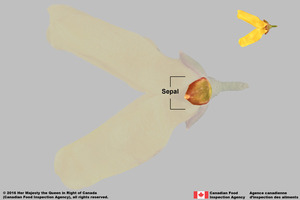 and stylesstyles:
and stylesstyles:
in a flower, the narrow and elongated part of the pistil between the stigma and the ovary; sometimes persisting in fruit
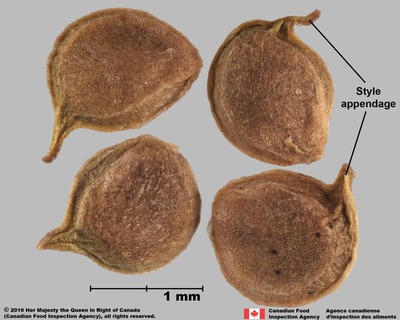 , many seeded, seeds packed obliquely. Pericarppericarp:
, many seeded, seeds packed obliquely. Pericarppericarp:
fruit wall or fruit coat
yellow, leatheryleathery:
texture—moderately thick, tough, and very pliable
or chartaceouschartaceous:
=papery, papyraceous
, ribbedribbed:
surface relief—wide, prominent, linear ridges that are generally rounded and longitudinally situated on the surface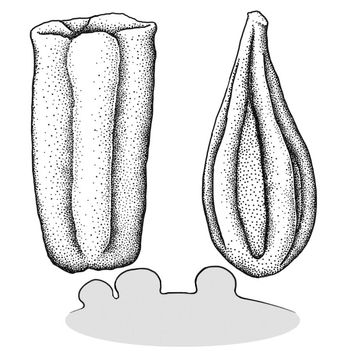 .
.
Seed linearlinear:
(shape) long, narrow, and uniform in width; (of embryo) embryo is straight and much longer than wide
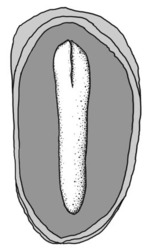 or fusiformfusiform:
or fusiformfusiform:
spindle-shaped; broadest at the middle and tapering at both ends
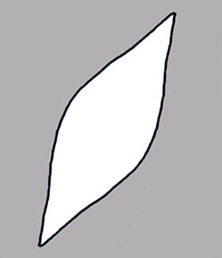 , compressedcompressed:
, compressedcompressed:
flattened; in grasses, used to denote compression (not necessarily flattened) either laterally or dorsiventrally
in transectiontransection:
a cross section; representing a plane made by cutting across an organ at a right angle to its length , 0.6–3 mm long, with or without appendages. Pericarppericarp:
, 0.6–3 mm long, with or without appendages. Pericarppericarp:
fruit wall or fruit coat
red, reddish-brown or white. Pleea seeds have a long filiform appendage on one end and a short appendage on the other. Tofieldia seeds have a long filiform appendage at one end, short and broad appendages on both ends, or without any appendages. Harperocallis seeds may be dark red with a white decurrent appendage (South American species) or pale yellow with short appendages at both ends (Harperocallis flava). Seeds in H. flava may be straight or curvedcurved:
(of embryo) linear embryo is curved into an arch or horseshoe with the ends far apart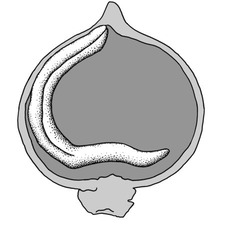 to twisted.
to twisted.
Embryo small. Endospermendosperm:
nutritive starch- and oil-containing tissue present in many seeds
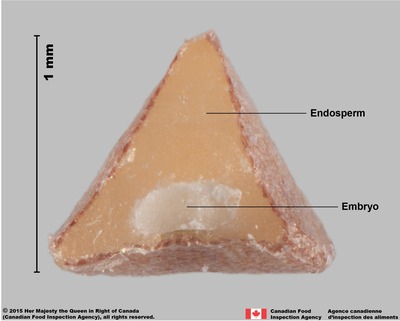 copious.
copious.
| Fruit | |
| Type | capsulecapsule: a dry, dehiscent fruit formed by two or more carpels  |
| Size range | 2–10 mm long |
| Shape(s) | oblong, ellipsoidellipsoid: 3D shape—elliptic , globoseglobose: 3D shape—more or less spherical  , ovoidovoid: , ovoidovoid:3D shape—ovate  , trigonous , trigonous |
| Texture | chartaceous, leathery |
| Surface relief | ribbedribbed: surface relief—wide, prominent, linear ridges that are generally rounded and longitudinally situated on the surface  |
| Color(s) | yellow |
| Unique features | Yellow, ribbedribbed: surface relief—wide, prominent, linear ridges that are generally rounded and longitudinally situated on the surface  capsulescapsules: capsulescapsules:a dry, dehiscent fruit formed by two or more carpels  , many seeded with seeds packed obliquely. , many seeded with seeds packed obliquely. |
| Seed | |
| Size range | 0.6–3 mm long |
| Shape(s) | linear, fusiform |
| Surface relief | unknown |
| Color(s) | red, reddish brown, white |
| Unique features | Red or white, elongate seeds, usually with terminal appendages. |
| Other | |
| Embryo | small |
| Nutritive tissuenutritive tissue: tissue within the seeds that nourishes the developing embryo; such as endosperm, perisperm, or chalazosperm in angiosperms; megagametophyte in gymnosperms |
endosperm endosperm: nutritive starch- and oil-containing tissue present in many seeds  copious copious |
Scattered throughout the north temperate regions, Northern South America.

Distribution map courtesy of Angiosperm Phylogeny Website.
Baskin and Baskin 2021Baskin and Baskin 2021:
Baskin C and Baskin J. 2021. Relationship of the lateral embryo (in grasses) to other monocot embryos: A status up-grade. Seed Science Research 31 (3): 199-210. doi:10.1017/S0960258521000209; Dahlgren et al. 1985Dahlgren et al. 1985:
Dahlgren RMT, Clifford HT, and Yeo PF. 1985. The families of the monocotyledons: structure, evolution, and taxonomy. Springer-Verlag, Berlin. 520 pp.; Flora of North America Editorial Committee 1993+Flora of North America Editorial Committee 1993+:
Flora of North America Editorial Committee, eds. 1993+. Flora of North America North of Mexico [Online]. 22+ vols. Flora of North America Association, New York and Oxford. Accessed January-March 2024. URL: http://beta.floranorthamerica.org.; Kirkbride et al. 2006Kirkbride et al. 2006:
Kirkbride JH, Jr, Gunn CR, and Dallwitz MJ. 2006. Family guide for fruits and seeds, vers. 1.0. Accessed September 2020-January 2022. URL: https://nt.ars-grin.gov/seedsfruits/keys/frsdfam/index.cfm .; Kubitzki et al. 1990+Kubitzki et al. 1990+:
Kubitzki K et al., eds. 1990+. The families and genera of vascular plants. 7+ vols. Berlin etc.; Takhtajan 2009Takhtajan 2009:
Takhtajan A. 2009. Flowering plants: Second edition. Springer Nature, Switzerland. 871 pp.; Tutin et al. 1964–1980Tutin et al. 1964–1980:
Tutin TG, Burges NA, Chater AO, Edmondson JR, Heywood VH, Moore DM, Valentine DH, Walters SM, and Webb DA (eds.) 1964–1980. Flora Europaea. 5 vols. Cambridge University Press, Cambridge UK. 2,524 pp.; Zhengyi et al. 2004+Zhengyi et al. 2004+:
Zhengyi W, Raven PH, and Deyuan H. 2004+. Flora of China [online]. 25 vols. Science Press, Beijing China & Missouri Botanical Garden, St. Louis USA. Accessed January–March 2024. http://flora.huh.harvard.edu/china/
*The number of genera and species is based on Christenhusz and Byng 2016Christenhusz and Byng 2016:
Christenhusz MJM and Byng JW. 2016. The number of known plant species in the world and its annual increase. Phytotaxa 261 (3): 201-217. https://doi.org/10.11646/phytotaxa.261.3.1, which may differ from the number of genera in GRIN-Global.